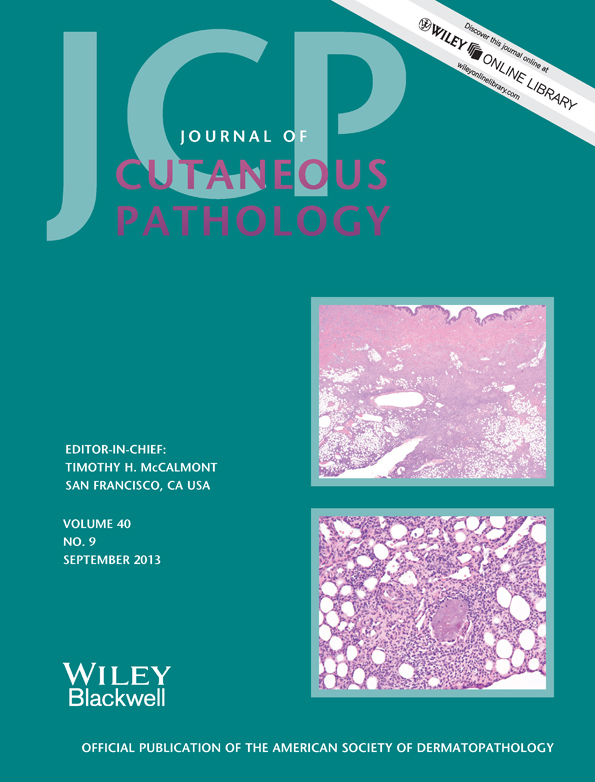Agminated pigmented matricoma: a case of a unique tumor with a multifocal appearance composed of neoplastic matrical cells with a significant component of melanocyte
Abstract
Matricoma is benign follicular neoplasm with the same constituent cells as pilomatricoma but with a different silhouette. Matricoma consists mostly of solid aggregations of matrical cells, as opposed to pilomatricoma, which is often a cystic lesion. We herein describe a case of agminated pigmented matricoma. A 27-year-old Japanese man visited our hospital complaining of three separate, pigmented, firm and sessile nodules on the back. Histopathologic examination revealed mostly solid aggregations of matrical and supramatrical cells located mainly within the dermis and the upper part of the subcutis. Shadow cells were present mostly within the aggregations. At higher magnifications, occasional indication of inner sheath differentiation, in addition to differentiation toward hair in the form of shadow cells, could be discerned in the center of the aggregations. The matrical and supramatrical cells within the aggregations were relatively uniform in size and shape, and contained several mitotic figures. Heavily pigmented melanocytes were present within the aggregations of matrical and supramatrical cells, and heavily pigmented melanophages were found in adjacent stroma. Pigmentation is a rare event in benign and malignant adnexal tumors, and to our knowledge, no similar case has been reported.




